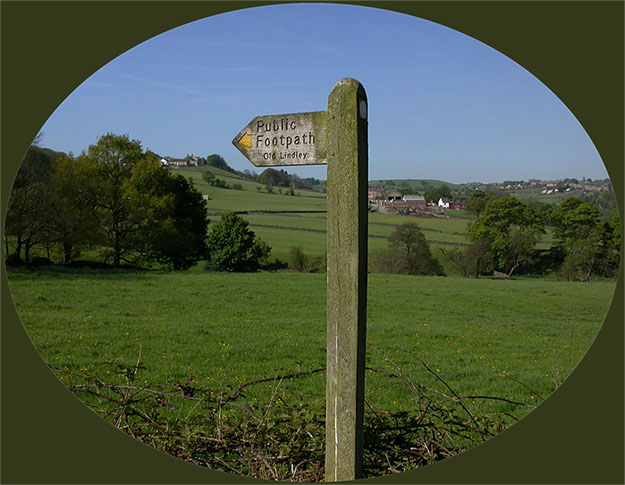
Old Lindley Moor.
Near Huddersfield West Yorkshire.
A photographic stroll about footpaths and fields.
by Ian Walker. UK.
Introduction.
So far 2007 has been unusual with much higher than average temperatures and little rainfall in April with spring seemingly shortened and in effect early summer taking over. Many years ago I fell into what I now consider to be 'the trap' of doing long and arduous walks in the Lake District, Yorkshire Moors, Peak District and many other places not spending much time to look around at nature and taking the time to enjoy the ambience of these places. Following many of the popular trails used by hordes of others on the same day spoils the quietness and reflection that such places have to offer. I have completely changed over the last ten years and now a walk usually consists of three miles or less but at any opportunity I stop, watch and listen and see what the landscape and nature has to offer. The Huddersfield area is not considered a tourist destination and this suits me just fine since to walk in the often overlooked quiet roads and valleys only a few miles from the busy suburbs one has the opportunity to stroll by oneself at a gentle pace.
Old Lindley and the moor that surrounds it is less than two miles away from the busy M62 motorway which when close too always makes it presence felt but as we descend into the quieter and more intimate valleys the noise subsides and we can enjoy the sounds of birds and small streams. Although this northern district does not have the variety of wildlife and plants associated say with the South Downs its charm lies elsewhere in the fact that for the most part a walker has the place to him or herself to enjoy what nature can offer. Amongst the trees in spring we can hear chiff chaffs, willow warblers and greater spotted and green woodpeckers whilst looking more closely several types of butterfly inhabit the damp grasslands. The moor itself consists of the small farms, rough pasture and open spaces with drystone walls typically associated with this part of England, while an array of small tracks and footpaths lead to quiet valleys which in spring can bring about a peace and well being. What always strikes me the most more than many places I have visited in the past is that at every turn of the road or path the landscape changes quite rapidly so we can go from open fields to sheltered walks to babbling brooks in less than half a mile... much different to some areas on the eastern coast with many miles of arable farmland and little hedgerow.

A footpath sign to Old Lindley with typical small farms and fields scenery in the background.
Nikon 4500 camera.
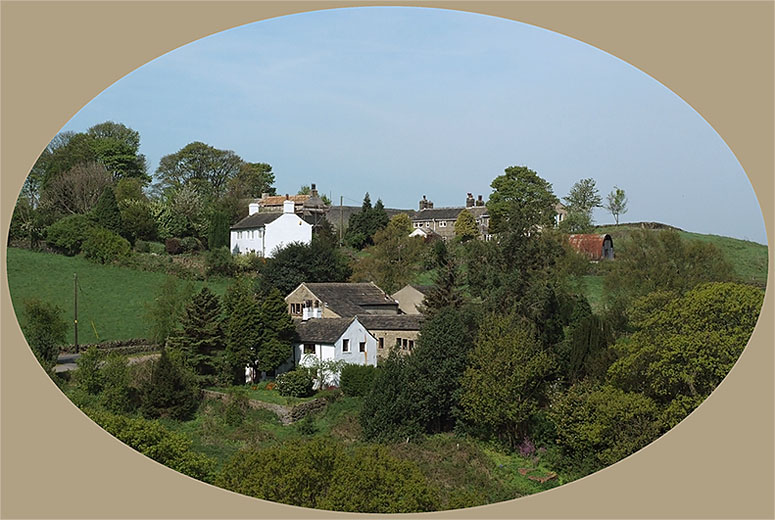
Old Lindley consists of several farm houses and cottages with a quiet road providing easy walking without much traffic.
Fuji DSLR camera.

Blackley brickworks has not been used for some years and is dilapidated, it is normally considered an 'eye sore' but I have got used to it over the years and don't mind it any more. The brickworks can be seen across the fields from some parts of Old Lindley. (Editor's note added, June 25th 2013: It has just been completely demolished, including the chimney. At the time of writing, 'outline' planning permission has been granted to the owners for a development of 120 new houses.)
Fuji DSLR camera.

In the open spaces looking to the sky can bring some unusual sights. Contrails from three jets high in the sky, in the last few years with the massive increase of air traffic contrails are often seen spreading and merging to form high cloud.
Canon Ixus camera.
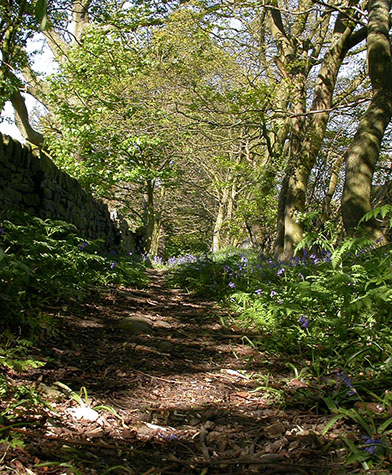
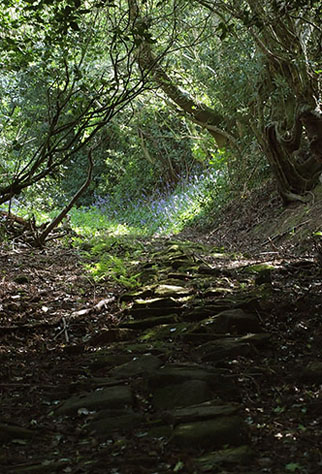
As we come off the open spaces we can find sheltered walkways beneath trees including oak, blackthorn and hawthorn these pathways usually follow the field and farm boundaries. Here we find blue bells in abundance in the shady areas. Sometimes the path is made from old leaves, small branches and clay others, slabs of stone suggesting at some time they were perhaps regular walk ways. Although these paths are only short they are tranquil places and best enjoyed at a most leisurely pace.
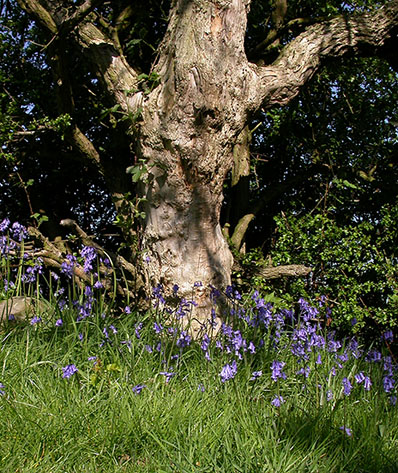
Dappled shade provided by an old gnarled tree is just the type of habitat where bluebells thrive. There are many banks to enjoy sitting down on the warm grass in the spring and summer to take in a few minutes rest before moving on.
Nikon 4500 camera.

A montage of pink purslane in the foreground with bluebells in the distance. Pink purslane likes shaded or dappled shade damp areas and the mix with blue bells provides a nice contrast of colours and shapes.
Fuji DSLR camera.
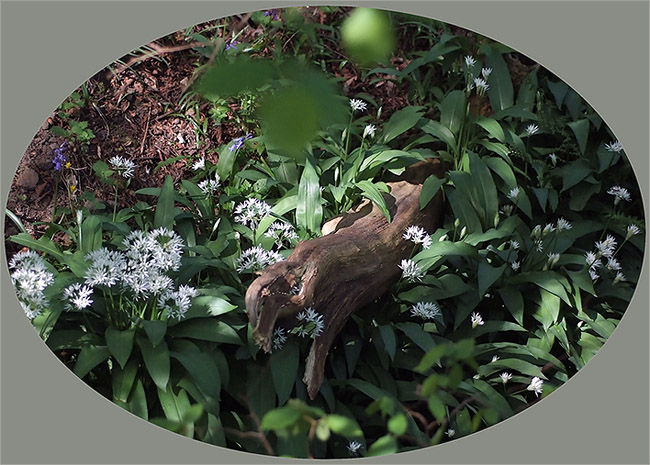
Also liking the shade is wild garlic with the most beautiful white flowers, this picture was taken near a small stream, a typical setting where this plant thrives.
Fuji DSLR camera.
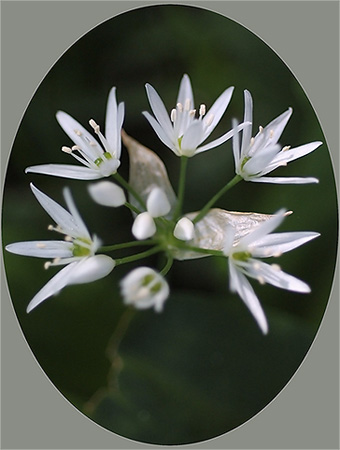
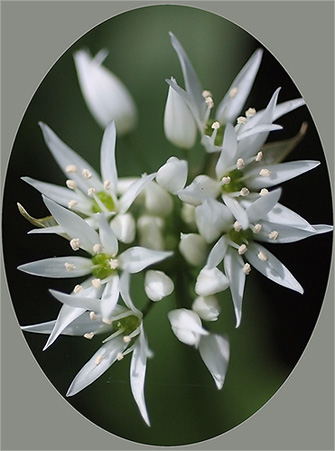
Two close-ups of the wild garlic flowers.
Fuji DSLR camera.

Hawthorn was just coming into bloom on the 1st of May. An easy way of distinguishing blackthorn from hawthorn is that blackthorn flowers come out before the foliage whilst hawthorn as seen above, the flowers arrive with the leaves.
Nikon 4500 camera.
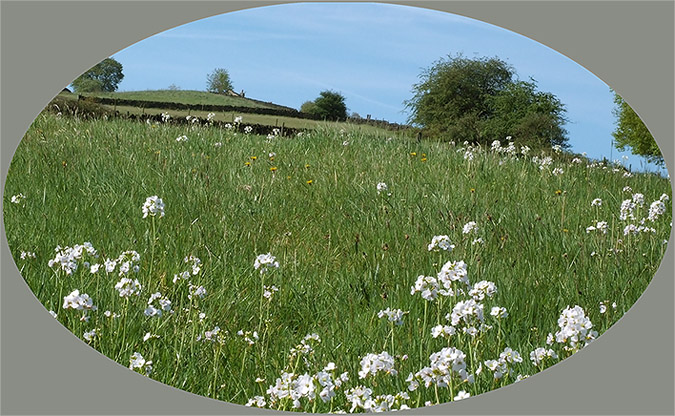
This year has been excellent for the cuckoo flower a graceful pinkish-white flower which loves the damp areas amongst rough pasture, the flowers change colour somewhat as they get older with shades of light pinks and white whilst butterflies that love visiting the fields can often be seen dancing across the flowers in the spring visiting the flowers for nectar.
Fuji DSLR camera.
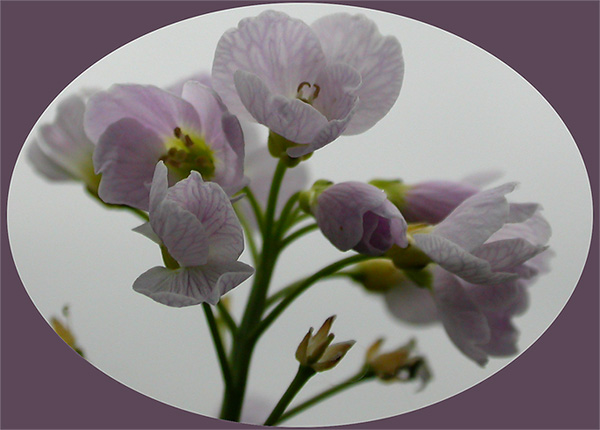
Cuckoo flower with the picture taken low to the ground against a grey sky, using an overcast sky can enhance the colour of the petals and reduce burn-out on the digital image. Notice the variety of delicate whites and pink veins that make up the flowers.
Nikon 4500.
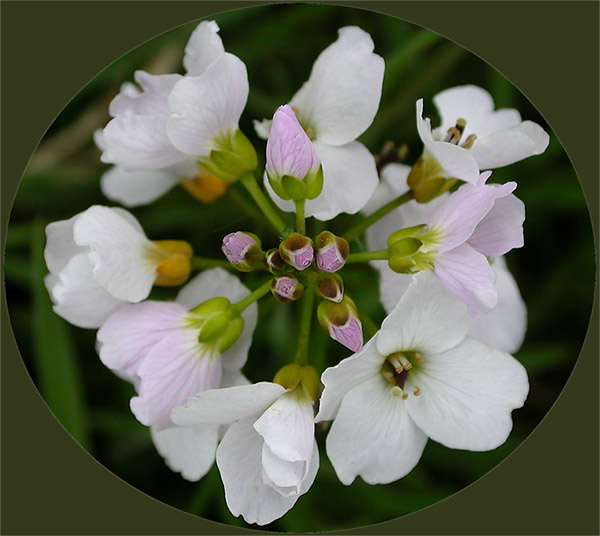
Top view of the cuckoo plant flowers with more to come in the centre.
Nikon 4500.
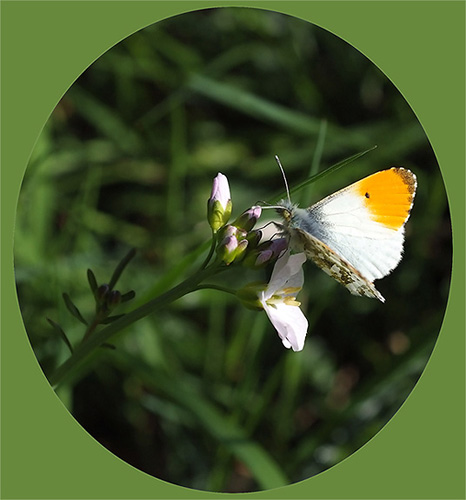
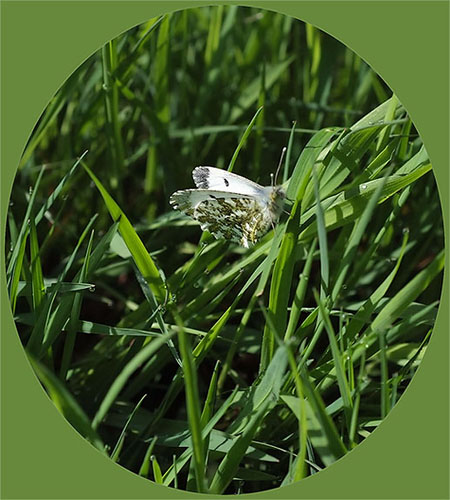
The orange tip butterfly is often associated with the cuckoo flower, the male on the left with is orange wing tips patrols from mid morning onwards in sunny weather following hedgerows and fields looking for a mate and challenging other males. In between its forays it visits flowering plants like the cuckoo flower to drink the nectar. The female often rests closer to the ground sitting on grass stems and in days of old was called 'The lady of the woods'. The young caterpillars are a little unusual in that they are cannibals and in the unlikely event of two meeting it is quite possible that one will get eaten. The commoner brown and occasionally green chrysalis is very beautiful looking not dissimilar to a pointed boomerang.
Fuji DSLR camera.
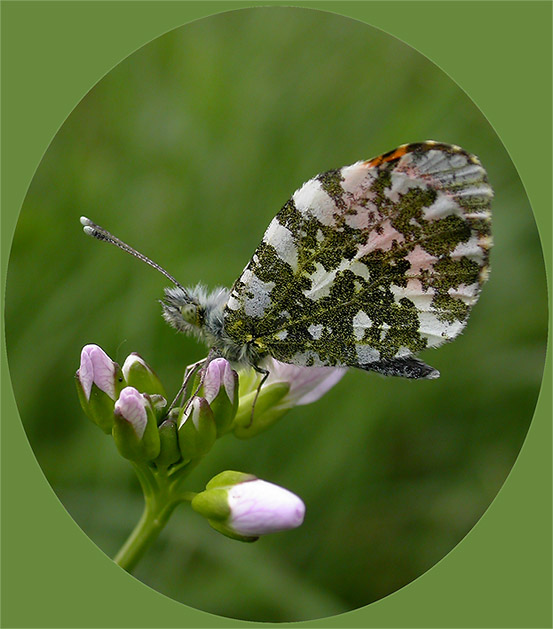
Underside of male orange tip butterfly sitting on cuckoo flower.
Nikon 4500.
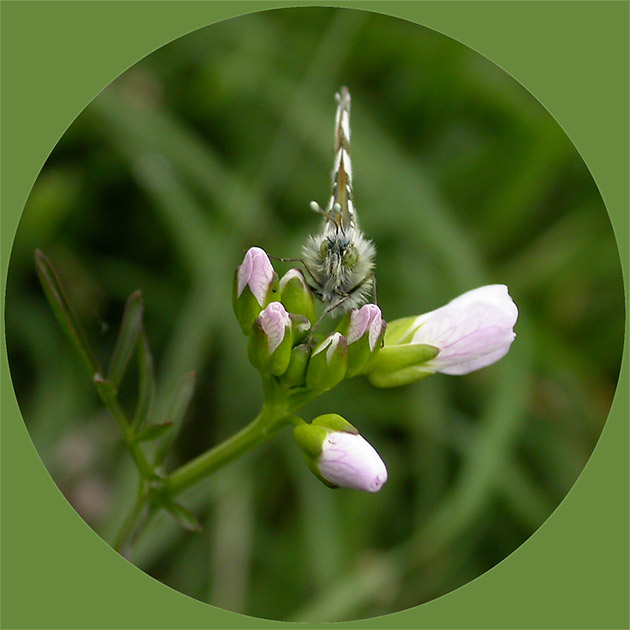
Head on view of male orange tip butterfly, notice the strange eyes!
Nikon 4500.
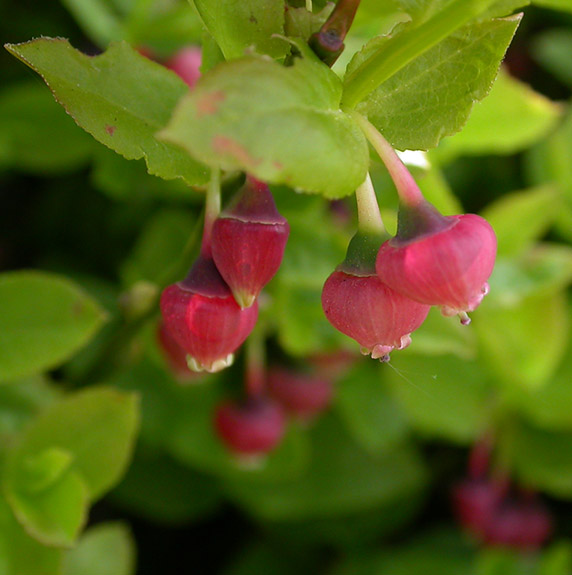
Bilberry flowers, often overlooked because they are so small.
Nikon 4500.
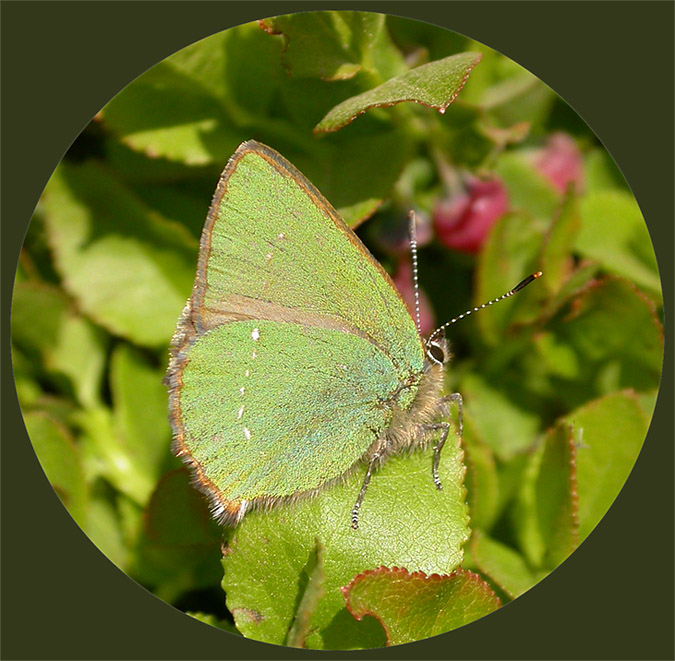
The delicate iridescent greens of the underside of a green hairstreak butterfly catching the afternoon sunlight, these small quick flying butterflies like particular areas to patrol and can be found on soil banks and bilberry sunning themselves and keeping an eye on rival males since they are very territorial. The caterpillars have the widest range of food plants of any British butterfly the adults emerging but once a year around late April if it has been a warm spring. The family name of Callophrys [Greek for beautiful eyebrow] comes from the fact the adults have very hairy fringes and mouthparts! It is thought that the full grown caterpillar seeks ants nests where it turns into a chrysalis, these ooze a secretion that the ants like and it also makes 'clucking' sounds which evidently the ants seem to find agreeable from an intruder in their nest. These sounds can be heard by us as 'squeaks' and the green hairstreak has the loudest of this unusual phenomena from any of the Lycaenidae butterflies.
If you miss an opportunity to catch them on camera try going back the following day at the same spot if the weather is still fine. They are quite obliging in terms of remaining still for a picture unlike the orange tip which is a difficult butterfly to photograph because of its constant movement. They always close their wings once they have landed but the upper wings of both male and female are a chocolate brown colour but with very little markings. Although officially recorded in the Huddersfield area this is the first time I have seen this butterfly in this locality since I moved here 17 years ago.
Nikon 4500.
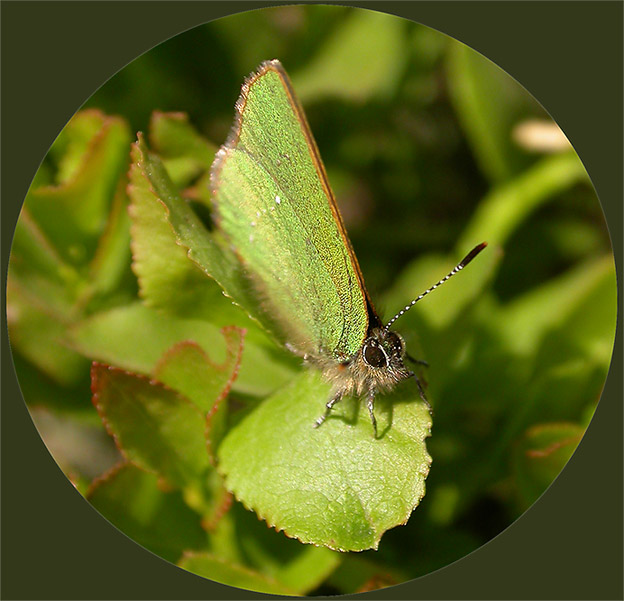
Head on view of the green hairstreak butterfly resting on bilberry leaves, notice the white 'ring' around the eye.
Nikon 4500.

Grasses and plantains are flowering this time of year. When the wind gets up unabated across the larger fields I like the way it catches the longer grasses making them dance to the tune of the currents, swirls and eddies, a mesmerising sight and well worth watching for a few minutes, to be lost in the flow of nature. These fields are not far below the M62 motorway and run parallel to a rough track enjoyed by horse riders and dog walkers whilst looking below in the opposite direction good views of Old Lindley and Halifax can be seen in the distance. Unfortunately atmospheric pollution and haze make photography very poor on most days throughout the year. About one in sixty days are clear enough for some good panoramic shots but again these are spoiled by pylons and cables running in several directions below this path.
Nikon 4500.

Looking up to the track just mentioned through rough pasture from the road leading down to Old Lindley which runs fairly parallel for a while. As we walk down the road you occasionally come across features like this one were an overgrown small water trough provides life for many small aquatic creatures mainly of the microscopic variety. The poor afternoon visibility is clearly shown in the distance.
Nikon 4500.

A close-up of the old water trough overgrown with vegetation.
Nikon 4500.
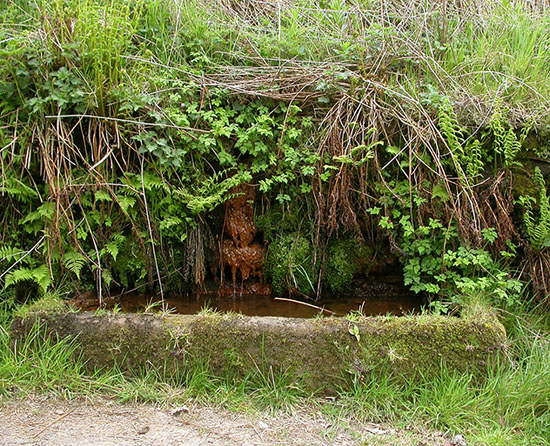
Whilst further down the valley along the road a different style of trough, notice the different tonal balance of the 'greens' compared to the other trough images due to being taken in a very overcast morning rather than afternoon sunshine.
Nikon 4500.
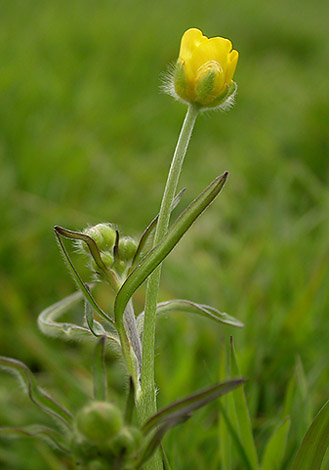
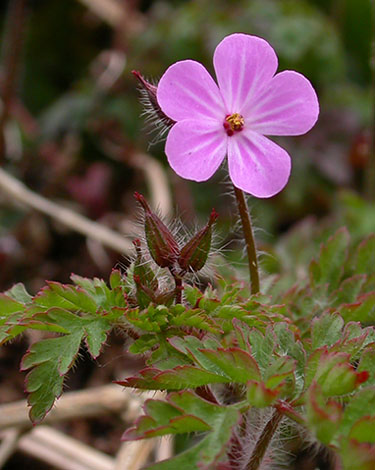
Adjacent to the road sides at the field boundaries we often find buttercups and herb robert
Nikon 4500.
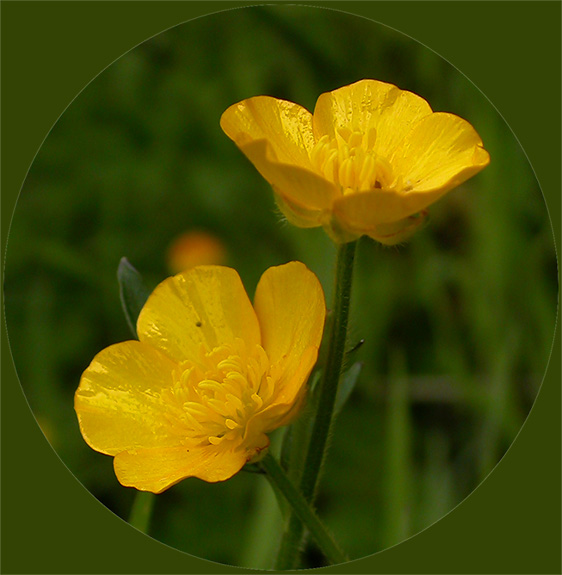
Close up of buttercup flowers.
Nikon 4500.
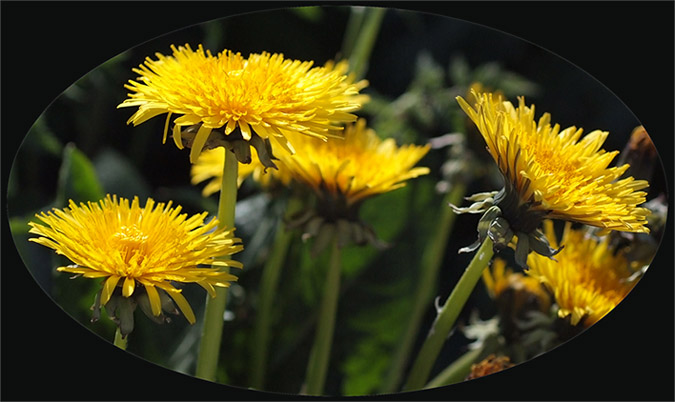
Dandelions abound along the drystone walls and grass verges, always rich with its colour this very common plant provides much enjoyment.
Fuji DSLR camera.
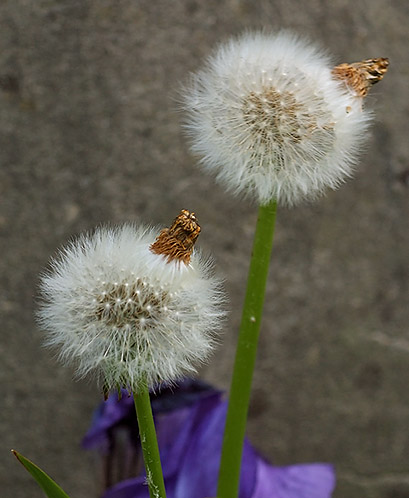
As the flowers are quickly over seeds soon develop, these dandelions still with their seed casings attached will soon be spreading their seeds to the breeze some of which will be traveling may be many yards or sometimes kilometres before settling at another location to give us more colour.
Fuji DSLR camera.
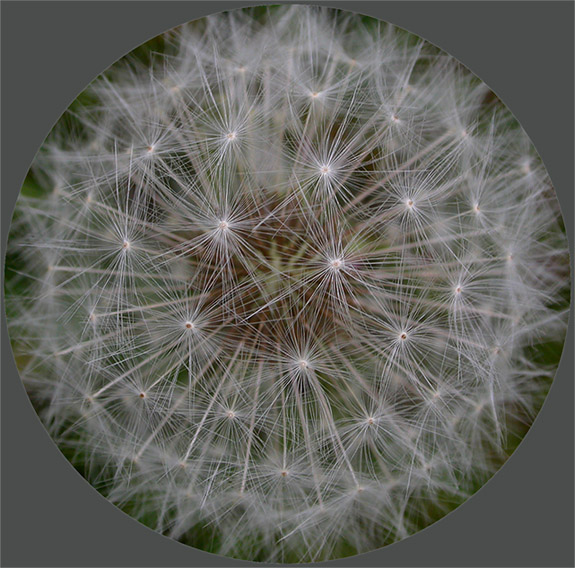
Top shot of a dandelion.
Nikon 4500 camera.
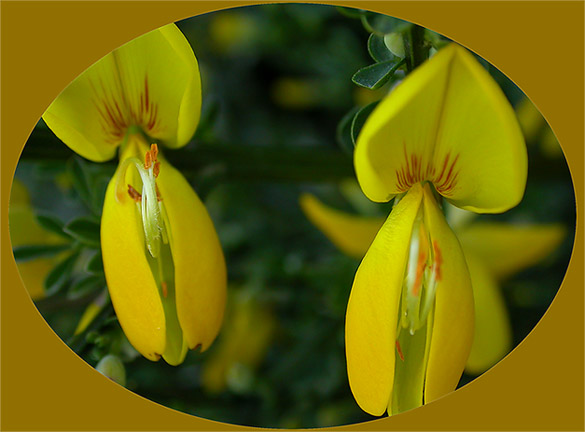
The exquisite broom a member of the pea family is often pollinated by busy bumble bees and as they enter into the flowers can often make amusing buzzing sounds as their wings vibrate against the petals whilst the pollen gets well and truly distributed over their hairy bodies.
Nikon 4500 camera.
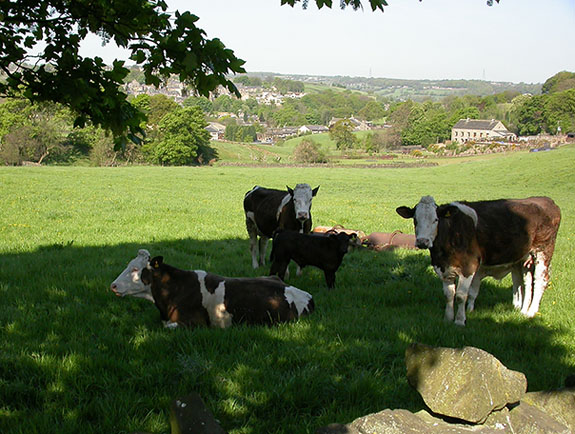
Coming out from sheltered walks under the trees some cows appear with calves.
Nikon 4500 camera.
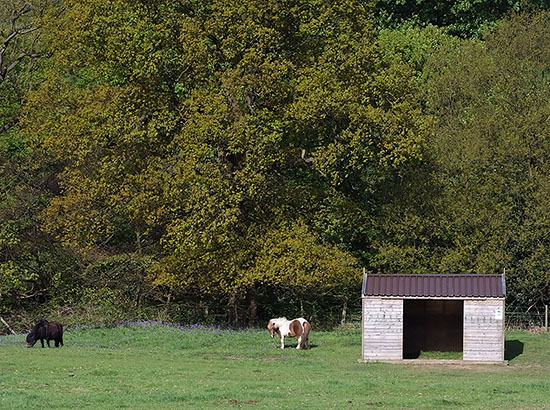
Many fields have ponies and horses, the brown and white one is one of my favourites.
Nikon 4500 camera.
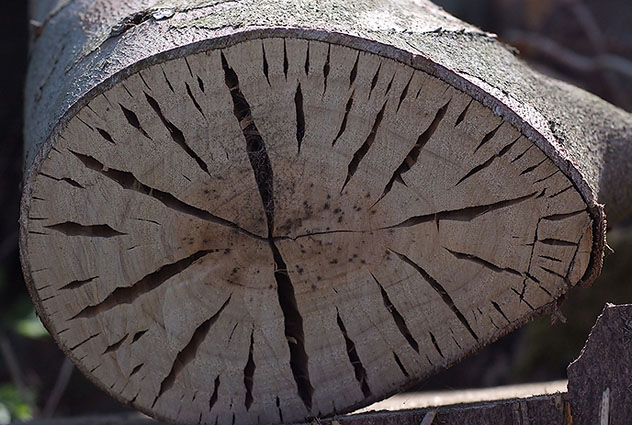
Old logs can assume interesting designs left to dry naturally in the sun.
Fuji DSLR camera.
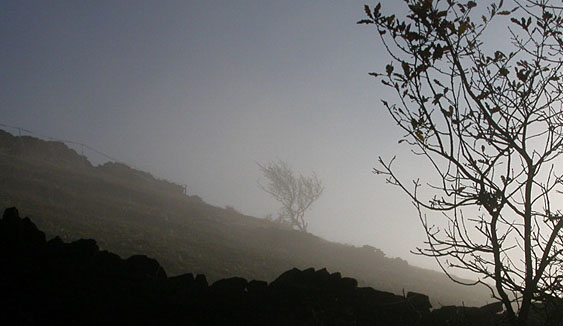
Early morning mist can add a magical dimension to simple dry stone walls.
Canon Ixus camera.
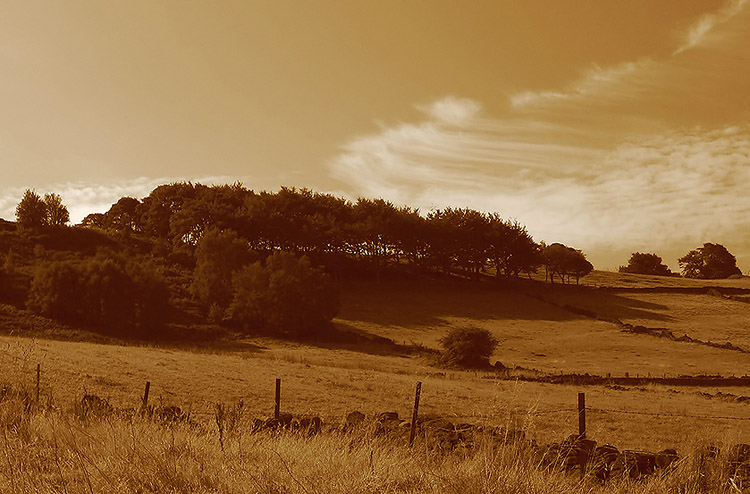
Bank of cirrus clouds makes a simple backdrop to fields and trees, a typical view from the track mentioned earlier in the article.
Canon Ixus camera sepia mode.
Comments to the
author,
Ian
Walker
, are
welcomed.
Published in the May 2007 edition of Micscape.
Please report any Web problems or offer general comments to the Micscape Editor.
Micscape is the on-line monthly magazine of the Microscopy UK web site at Microscopy-UK
© Onview.net Ltd,
Microscopy-UK, and all contributors 1995 onwards. All
rights reserved.
Main site is at
www.microscopy-uk.org.uk
with full mirror at
www.microscopy-uk.net
.